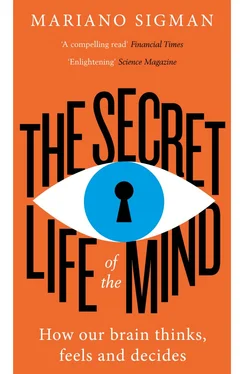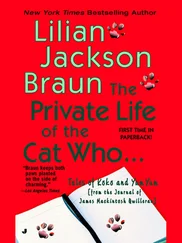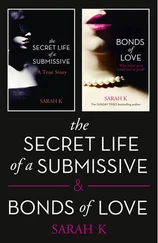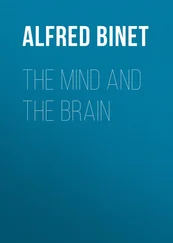Until now we’ve talked about decision-making processes as if they were all of one class, governed by the same principles and carried out in the brain by similar circuits. However, we all perceive that the decisions we make belong to at least two qualitatively distinct types; some are rational and we can put forward the arguments behind them. Others are hunches, inexplicable decisions that feel as if they are dictated by our bodies. But are there really two different ways of deciding? Is it better to choose something based on our intuitions, or to carefully and rationally deliberate each decision?
In general we associate rationality with science, while the nature of our emotions seems mysterious, esoteric and essentially inexplicable. We will topple this myth with a simple experiment.
Two neuroscientists, Lionel Naccache and Stanislas Dehaene – my mentor in Paris – did an experiment in which they flashed numbers on screens so fleetingly that the participants believed they’d seen nothing. This type of presentation, which doesn’t activate consciousness, is called subliminal. Then they ask the participants to say if the number is higher or lower than five and, much to their own surprise, they answer correctly in most cases. The person making the decision perceives it as a hunch, but from the experimenter’s perspective it is clear that the decision was induced unconsciously with a mechanism very similar to that of conscious decision-making.
Which is to say that, in the brain, hunches aren’t so different from rational decisions. But the previous example doesn’t capture all the richness of the physiology of unconscious decisions. In this case, popular expressions such as ‘trust your heart’ or ‘go with your gut feelings’ turn out to be quite accurate and shed light on how intuitions are forged.
All it takes to understand this is putting a pencil between your teeth, lengthwise. Inevitably, your lips will rise in an imitation of a smile. This is obviously a mechanical effect, not a reflection of an emotion. But that doesn’t matter, it still gives a certain sense of wellbeing. The mere gesture of the smile is enough. A film scene will seem more entertaining to us if we watch it with a pencil held in our mouth that way than if we hold it between our lips, as if scowling. So, deciding whether something is fun or boring does not only originate in an evaluation of the external world, but in visceral reactions produced in our internal worlds. Crying, sweating, trembling, increasing heart rate or secreting adrenaline are not merely reactions by the body to communicate an emotion. Instead, the brain reads and identifies these bodily variables to encode and produce feelings and emotions.
That corporeal states can affect our decision-making process is a physiological and scientific demonstration of what we perceive as a hunch. When making a decision unconsciously, the cerebral cortex evaluates different alternatives and, in doing so, estimates the possible risks and benefits of each option. The result of this computation is expressed in corporeal states through which the brain can recognize risk, danger or pleasure. The body becomes a reflection and a resonating chamber of the external world.
The body in the casino and at the chessboard
The key experiment showing how decisions are based on hunches was done with two decks of cards.
As in so many board games, this experiment employs ingredients from real life decision-making: winnings, losses, uncertainty and risk. The game is simple but unpredictable. In each turn, the player merely chooses which deck to pick a card from. The number of the card chosen indicates the coins that the player wins (or loses if it’s negative). Since the cards are turned face down, the player has to evaluate, over the course of the entire experiment, which of the two decks is more profitable.
This is like someone in a casino who has to choose between two one-armed bandits just by observing how many times and how much each one pays out over a period of time. But, unlike in the casino, this game thought up by a neurobiologist, Antonio Damasio, is not purely random: there is one deck that on average pays out more than the other. If this rule is discovered, then the next step is simple: always choose the deck that pays more. Lo and behold, an infallible system.
The difficulty lies in the fact that the player has to discover this rule through pondering a long history of payouts amid large fluctuations. After much practice, almost everyone discovers the rule, is able to explain it and, naturally, starts to choose cards from the correct deck every time. But the real finding happens along the way to this discovery, among intuitions and hunches. Even before being able to articulate the rule, the players start to play well and more frequently choose cards from the correct deck. In this phase, despite playing much better than when they were choosing randomly, the players cannot explain why they opt for the correct deck (the one that pays out more in the long term). Sometimes they don’t even know they are choosing one deck more than the other. But unequivocal signs show up in their bodies. In this part of the experiment, when players are about to choose the incorrect deck, their skin conductance increases, indicating a rise in sweating, which is in turn a reflection of an emotional state. Which is to say that the players cannot explain that one of the decks gives better results than the other, but their bodies already know it.
My colleague María Julia Leone, a neuroscientist and international chess master, and I carried out this experiment on the chessboard, following the Borgesian concept of chess as a metaphor for life. Two masters face off. They have thirty minutes to make a series of decisions that will organize their armies. On the board, it is a battle to the death and emotions are running high. During the game we trace the players’ heartbeats. Heart rate – just like stress – increases over the course of the game, as time runs out and the end of the battle approaches. Their heart rates also spike when their opponent commits an error that will decide the outcome of the game.
But the most significant discovery we made was this: a few seconds before the players made a mistake, their heart rate changed. This means that in a situation with countless options, with a complexity that is similar to that of life itself, the heart panics before making a bad decision. If the players could recognize that, if they were able to listen to what their hearts are telling them, they could perhaps avoid many of their errors.
This is possible because the body and the brain hold the keys to decision-making long before we are consciously aware of those elements; the emotions expressed in our bodies function as an alarm to alert us to possible risks and mistakes. This destroys the idea that intuition belongs to the realm of magic or soothsaying. There is no conflict between hunches and science; in fact, quite the opposite: intuition functions hand in hand with reason and deliberation, fully in the realm of science.
Rational deliberation or hunches?
Once we have discovered that hunches and intuitions are unconscious deliberations we can proceed to a question of more practical relevance. When should we trust our hunches and intuitions and when not? For those questions that matter most to us, should we trust our hunches or our rational deliberations?
The answer is conclusive: it depends. A social psychologist, Ap Dijksterhuis, found, in an experiment that is still generating controversy, that the complexity of a decision is what dictates when it’s best to deliberate consciously or act intuitively. Dijksterhuis found that to be the rule both in ‘mock’ decisions in the lab and in real-life decisions.
Читать дальше












